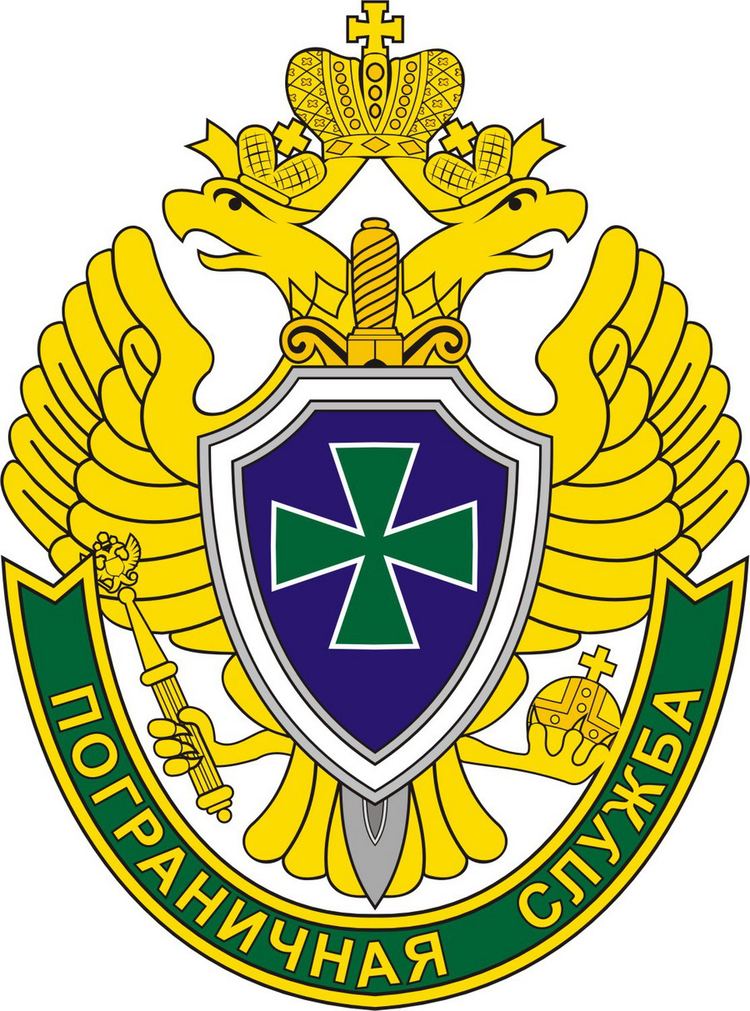Formed June 12, 1992 | Federal agency Russia | |
 | ||
Legal personality Governmental: Government agency Size 20,241 lineal kilometers General nature Federal law enforcement
Civilian agency Specialist jurisdiction National border patrol, security, and integrity. | ||
The Border Service of the Federal Security Service of the Russian Federation (Russian: Пограничная служба Федеральной службы безопасности Российской Федерации) is a branch of Federal Security Service of Russia tasked with patrol of the Russian border.
Contents
- Tsarist and Imperial Russia
- Soviet period
- Modern period
- Mission
- Command
- Old FPS structure
- Lineup
- Timeline
- Aircraft
- Helicopter
- References
The terms Border Service of Russia (Russian: Пограничная служба России) and Border Force of Russia (Russian: Пограничные войска России) are also common, while in English, the terms "Border Guards" and "Border Troops" are frequently used to designate this service. The Border service includes the Russian maritime border guard units (i.e., the coast guard).
Tsarist and Imperial Russia
One can trace the origin of the Russian border service to Prince Mikhail Vorotynsky and his Great Abatis Border in the 16th century. In 1782 the Empress Catherine II of Russia established Border Customs Guard units, originally manned by Russian Cossacks as well as by low-ranking cavalry troops. General Mikhail Barklay de Tolly organized in 1810 numerous border posts with 11 regiments of Don and Bug Cossacks along all western Russian border. Within two years Russian Border Guards became the first to oppose Napoleon's invasion of Russia (June 1812}. In 1832 Cossacks and cavalry were replaced by armed customs officials subordinate to the Ministry of Finance in peacetime (in wartime the border guards were automatically transferred to the army). In the same year a coast guard was set up, originally to observe Black sea and Azov sea coasts.
Count Sergei Witte, the Russian Minister of Finance in Alexander III's government, reformed the service on 13 October 1893 into the Independent Border Guards Corps (IBGC - a para-military rather than a civilian organization) headed by an army general and reporting directly to the ministry.
In 1906 about 40,000 soldiers and officers served in the IBGC - maintaining the defence of the leggthy Imperial border. They served in 8 division-sized districts as well as in the Saint Petersburg headquarters unit.
Soviet period
Soviet Border Troops, (Russian: Пограничные войска СССР, Pogranichnyie Voiska SSSR) were the militarized border guard of the Soviet Union, subordinated to its subsequently reorganized state security agency: first to Cheka/OGPU, then to NKVD/MGB and, finally, to KGB. Accordingly, they were known as NKVD Border Troops and KGB Border Troops (with Russian abbreviations - НКВД СССР/- КГБ СССР added on the end of official names). Unlike border guards of many other countries, Soviet Border Troops were a centralized force including also the maritime border guard units (i.e., a coast guard).
Modern period
Following the collapse of the Soviet Union, Federal Border Guard Service of Russia was created on December 30, 1993, and given a status of separate government agency. This organization retained some old traditions, most notably the dark green-colored uniform and "Border Guarder's Day" (an official holiday commemorated by celebrations of ex-servicemen). First minister of FBS (Federal Border Service) was Andrei Nikolayev, young and outspoken general who later became deputy of the State Duma. Russian Border Guards were also stationed outside of Russia most notably in southern Tajikistan, in order to guard the border with Afghanistan, until summer 2005. On Afghan-Tajik border on many occasions they were engaged in heavy fighting with drug-traffickers and Islamic extremists. Armenia's closed border with Turkey and open border with Iran is also still guarded by the Russians. On March 11, 2003, Russian president Vladimir Putin changed the status of Border Guard Service from a separate agency into a branch of Russian Federal Security Service. The current head of Border Guard Service of Russia is General Vladimir Pronichev. Border Guard Service of Russia is still tasked with a defence of the longest national border in the world.
In April 2012 Vladimir Pronichev announced that the country was planning to build 20 frontier posts in the Arctic region. Reasons for this development can be found in the increased abilities to explore hydrocarbon deposits in the north. It will also give Russia an ability to patrol and service the Northern Sea Route.
In July 2014 Ukraine opened a criminal case against the head of the Border Guard Service Vladimir Kulishov; he was accused of financing “illegal military groups” in Eastern Ukraine who at the time fought against the Ukrainian army.
Mission
Responsibilities of Border Guard Service of Russia include:
Command
Old FPS structure
FPS Russia, the Federal Border Service (Russian: Федеральная пограничная служба, Federal'naya Pogranichnaya Sluzhba), active from 30 December 1994 to 30 June 2003, was headed by a single centralized system, which included:
Lineup
Changes in the regional structure of the Border Service, instead of ten regional border (see the old structures FPS) for the new scheme includes regional offices of the border (in the federal districts) and 30 border offices. Includes the Maritime Border Guard.
Regional border districts:
The military educational institutions, vocational education:
As adopted by presidential decree № 457, dated April 23, 2001:
Enterprises, institutions and organizations which are subordinate to the Border Service:
Timeline
From 1938 to 1957:
The border troops (Guard):
